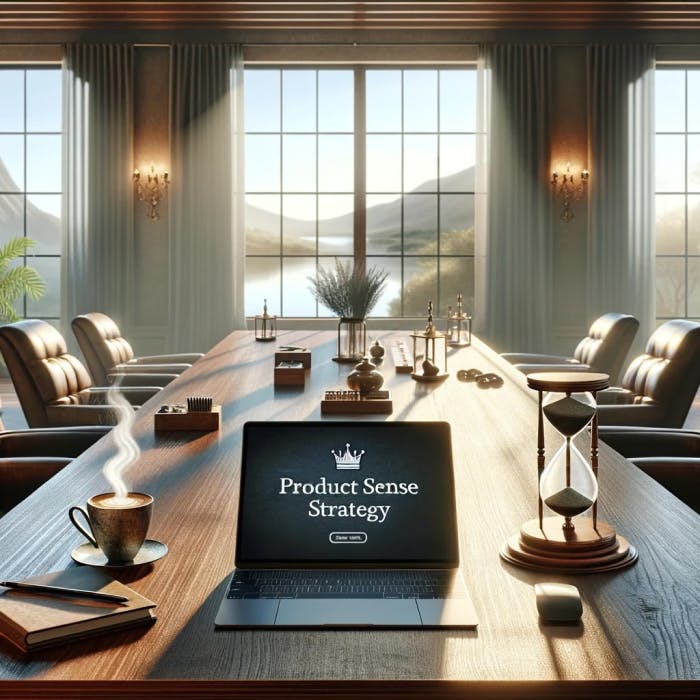Updated: January 24, 2024- 7 min read
This week Product School hosted Simon Li, a Product Manager at Google, for an #AskMeAnything session. He takes us through his Product experience at top companies and discusses hot topics like MVP/MLP, biggest challenges, vital resources, screening candidates, and more!

Meet Simon Li
Simon Li is an experienced Product Manager who ships delightful experiences that customers love, at the intersection of software, services, and hardware. He is currently a Product Manager for Google Photos, where he’s responsible for advancing the product’s deep integration into key ecosystems (e.g. Android) and key devices (e.g. Pixel). Before that, Simon spent 7 years at Amazon, where he led a cross-functional team as Senior Manager of Product and Design for Alexa Experience and Devices. He graduated with an M.Eng. in Electrical and Computer Engineering from Cornell University and earned an MBA from Duke University.
Product Insight: Challenges, Resources, Marketing, MVP vs. MLP, and More!
“How would you rate the job from a difficulty and stress perspective? ”
Product management is a difficult job because of all the uncertainty you face and the broad range of stakeholders you need to work with. At the same time, that’s what makes it so exciting!
Candidly, there can be extremely stressful moments, when you need to make judgment calls that can materially impact users’ lives and result in multi-million dollar revenue swings. The key is to establish the right work-life boundaries that work for you.
“Is it essential for a PM to need some sort of technical background when working at a technology company?”
In many ways, it helps a lot to have a technical background because the conversations will be a lot easier. At the same time, there is a bit of a “curse of knowledge” as well for those with a technical background, because it’s really easy to fall into the trap of trying to be the engineer instead of being the PM.
“ What’s your biggest challenge so far as PM, and how do you overcome it?”
The biggest challenge in being a PM is having the proper amount of empathy for all your customers. You have to remember that there are potentially millions of users out there who are very different from you, and you need to put yourself in their shoes to understand how they would interact with and react to the product.
“What are your thoughts or any challenges you face while involving engineers and designers early on when you don’t have a PRD handy but it’s an idea that you want to quickly put forward and hear their thoughts?”
When I want to approach engineering or design to discuss an idea, I always want to make sure I do some amount of homework to ensure that the discussion is useful. What’s helped me is to make sure I have the key set of user stories identified so it’s clear what the user problem and user goal are. Out of those user stories, even a quick set of 5-10 basic requirements (not a full PRD) can spur the conversation and guide it in the right direction.
“What are the most vital resources that you utilize as a PM in your day-to-day?”
As a PM, you really need to understand your customers deeply, so I rely on these resources a lot:
Metrics dashboards: How are users actually using the product?
Reviews: Back at Amazon, we’d read the product reviews all the time to better understand what users liked and didn’t like.
Customer service team: What are users calling in and complaining about?
The user research team: If customers aren’t proactively indicating their preferences through usage or feedback, we need to reach out to them to get specific insights.
“When and how do you decide it’s the right choice to go through with a redesign?”
I think it’s all about being very clear upfront about what metric you’re trying to move and setting the proper guardrails around how much you’re willing for other metrics to be compromised.
Beyond that, there definitely can be cases where you’ll have to use your intuition and make a judgment call. For smaller, polarizing features, you can consider including a user setting, but we try not to lean too much on that as a crutch.
Interested in design? Check out Design Thinking for PMs: 3 Lessons From Apple and Google
“As a PM how do you work with the marketing team and get them aligned with your product goals?”
I think the key to working with Marketing is to make sure to engage them early, during the concept phase of the product. Marketing generally has a lot of good feedback and a different perspective that can be a critical input into the product design from the beginning.
“Minimum viable product (MVP) or most lovable product (MLP), what works better for a successful product launch?”
I think it depends. When we were launching the first Echo, we really focused on a Minimal Lovable Product. After all, it was a completely novel device that might seem kinda silly at first. We really needed to make something that could gain true traction in an entire greenfield product space. So I think the focus on MLP there was smart.
What the Product Experience is Like at Amazon and Google
“How did you break into product and join Google?”
There are lots of different paths to product management. I started out in engineering, went to business school, then transitioned into product management. At Google, it seems like there are ways to go directly into product management out of college. At a company like Amazon, that path doesn’t really exist.
“How do you see Voice with Alexa enhancing the e-commerce experience? Are customers using this for ordering items off of Amazon?”
I think that there are already some cases in which voice makes shopping easier, especially when quickly re-ordering something you’ve previously bought already. I wouldn’t say that shopping is one of the top use cases of Alexa devices at the moment, but the entire category is still in its infancy. What we do know is that users with Alexa devices engage with the Amazon brand a lot on a daily basis, and are therefore more likely to purchase products on Amazon, even if not directly through Alexa.
“How do you decide if a candidate is worth interviewing for a PM role? Is it different when you hire for Google vs Amazon?”
I screened a lot of candidates at Amazon, and we were looking for PMs who have worked on similar products and have demonstrated a history of delivering results.

The interview processes for Google and Amazon are very different. Amazon focuses on finding out if you have demonstrated the leadership principles in your previous work. Google focuses less on what you’ve accomplished in the past and indexes more on hypothetical questions that measure your ability to think on your feet.
“Could you share your perspective on Product Management in Samsung vs Amazon vs Google? What were the differences in the organizational expectations from a Product Manager in each of the companies?”
I’ll leave out Samsung since I wasn’t really a PM there. The two biggest differences I see between PM at Google vs Amazon are:
At Amazon, you spend much more time doing the intellectual exercise of designing the product upfront. At Google, there’s less rigor upfront, so you launch something and iterate. Depending on the type of product, there are pros and cons to both.
Amazon’s decision-making is top-down, while it’s the opposite at Google. So if you’re working on a product that is pretty contained within a single team,
Google culture makes it easier for you to move faster since you can make decisions at a lower level. However, for highly strategic projects that span multiple organizations, Amazon’s culture makes aligning on and executing on those problems more effectively.
For more incremental or well-understood product categories, I think biasing more towards an MVP and iterating makes more sense than in those brand-new product categories.
“Do you have any advice for aspiring Product Managers?”
My final advice for aspiring product managers is to really think deeply about how and why you use everyday products. That is one of the key ways to build the muscle that can enable you to become a better product manager!
For more insights on Product Management, join us for our next #AskMeAnything session!
Updated: January 24, 2024




